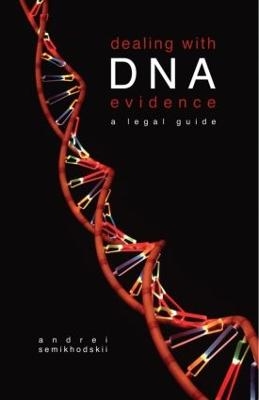
Dealing with DNA Evidence
A Legal Guide
Seiten
2007
Routledge Cavendish (Verlag)
978-1-84568-049-7 (ISBN)
Routledge Cavendish (Verlag)
978-1-84568-049-7 (ISBN)
Written specifically for students or practitioners of criminal law, this work gives readers an in-depth understanding of DNA evidence in criminal practice and clearly explains how it is obtained and how it can be successfully challenged in court.
Giving the reader an in-depth understanding of DNA evidence in criminal practice, this text explains in clear language how DNA evidence is obtained and how it can be successfully challenged in court to minimize its impact or even dismiss it completely.
Since it first entered the criminal legal practice DNA has become an indispensable tool in fighting crime, as it allows both unambiguous identification of the criminal by traces of biological material left at the crime scene as well as acquitting innocent suspects.
This book:
outlines the various types of testing used to obtain DNA evidence
highlights the weaknesses of DNA testing, presenting and discussing defence strategies for refuting DNA evidence
shows how DNA should be treated as just another piece of evidence and how on its own it is often not enough to convict someone of a particular crime.
This book is essential reading for students and practitioners of criminal law and practice and forensic science and law.
Giving the reader an in-depth understanding of DNA evidence in criminal practice, this text explains in clear language how DNA evidence is obtained and how it can be successfully challenged in court to minimize its impact or even dismiss it completely.
Since it first entered the criminal legal practice DNA has become an indispensable tool in fighting crime, as it allows both unambiguous identification of the criminal by traces of biological material left at the crime scene as well as acquitting innocent suspects.
This book:
outlines the various types of testing used to obtain DNA evidence
highlights the weaknesses of DNA testing, presenting and discussing defence strategies for refuting DNA evidence
shows how DNA should be treated as just another piece of evidence and how on its own it is often not enough to convict someone of a particular crime.
This book is essential reading for students and practitioners of criminal law and practice and forensic science and law.
Andrei Semikhodskii is Director of Medical Genomics Ltd.
Introduction to Criminal DNA Analysis. Forensic DNA Testing. Interpretation and Statistical Evaluation of DNA Evidence. Criminal DNA Databases. Pitfalls of DNA Testing. DNA Testing Errors. DNA Evidence Interpretation Errors. DNA Evidence During Trial. Challenging DNA Evidence in the Courtroom. Post-Convictional DNA Testing. Ethical Aspects of DNA Testing
| Erscheint lt. Verlag | 25.1.2007 |
|---|---|
| Zusatzinfo | 9 Tables, black and white; 3 Halftones, black and white; 1 Illustrations, black and white |
| Verlagsort | London |
| Sprache | englisch |
| Maße | 156 x 234 mm |
| Gewicht | 530 g |
| Themenwelt | Naturwissenschaften ► Biologie ► Genetik / Molekularbiologie |
| Recht / Steuern ► Allgemeines / Lexika | |
| Recht / Steuern ► EU / Internationales Recht | |
| Recht / Steuern ► Privatrecht / Bürgerliches Recht ► Zivilverfahrensrecht | |
| Recht / Steuern ► Strafrecht ► Kriminologie | |
| ISBN-10 | 1-84568-049-9 / 1845680499 |
| ISBN-13 | 978-1-84568-049-7 / 9781845680497 |
| Zustand | Neuware |
| Haben Sie eine Frage zum Produkt? |
Mehr entdecken
aus dem Bereich
aus dem Bereich
50 Meilensteine der Genetik
Buch | Hardcover (2022)
Librero b.v. (Verlag)
CHF 13,90


